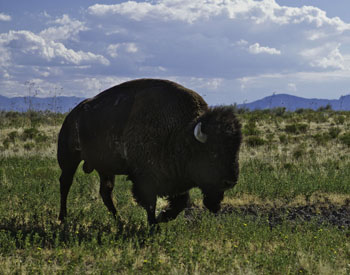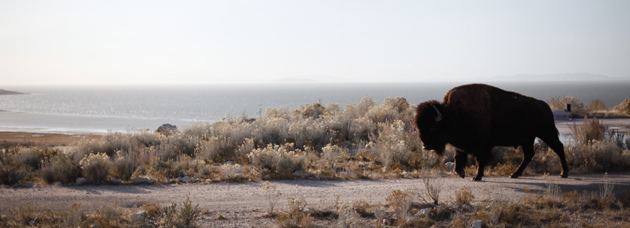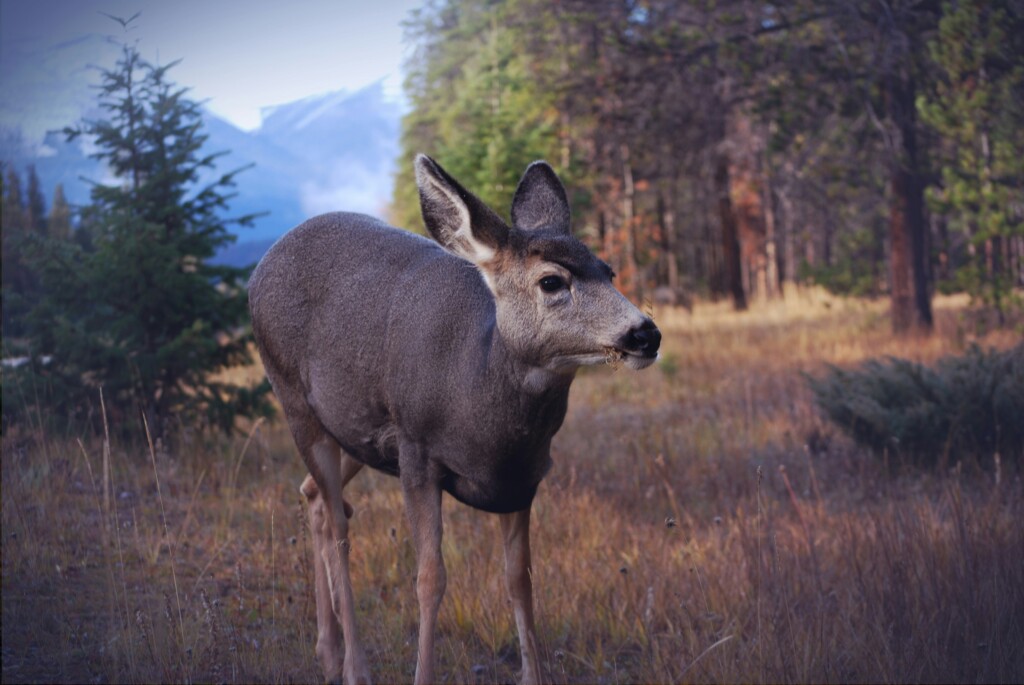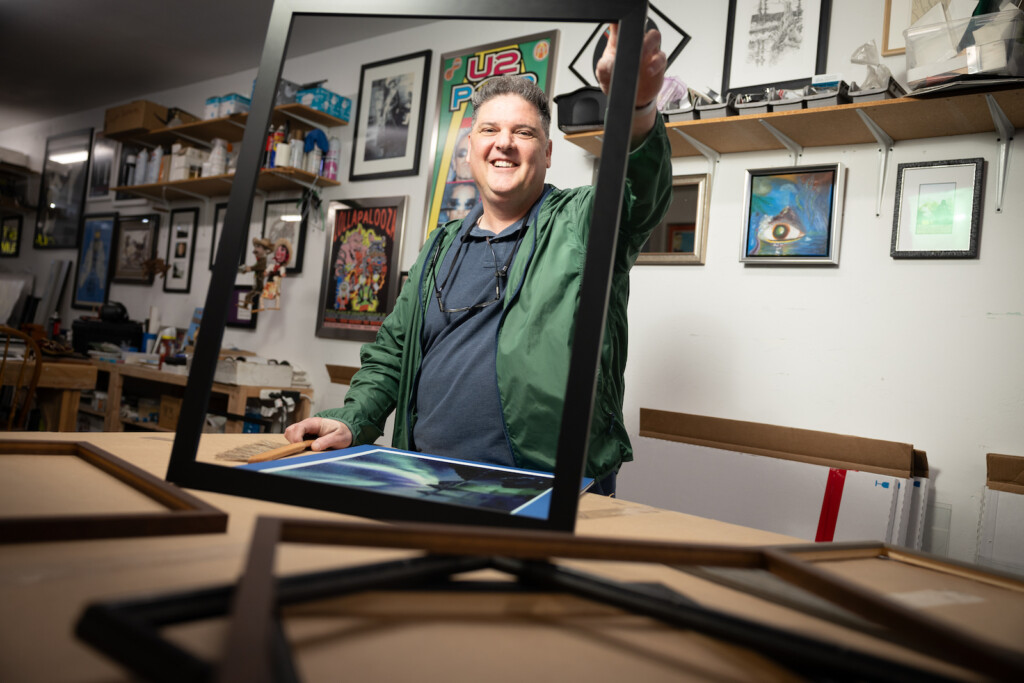
Turning a corner at the end of the long causeway drive to Antelope Island you encounter one of the painted bison sculptures that decorated Salt Lake during the 2002 Olympics. Then you confront the real thing. There is no comparison. A free-roaming herd of 500 bison live and prosper on Antelope Island. Nearly hunted to extinction, the American Bison has made a dramatic comeback thanks in part to independent ranchers, a growing market for bison meat and Antelope Island State Park.
The bison on the island enjoy freedom reminiscent of the early prairie herds. Apart from two weeks in October when the herd is rounded up and corralled, the bison have the run of the 42 square miles of Antelope Island.
Steve Bates is a wildlife biologist who works for the Utah State Parks Department and is in charge of the herd as well as other wildlife on the island. “The herd” he says, “is self sustaining and the bison are not given any supplemental feed.” They forage on their own and, though monitored, are left to their own devices. Steve explains that bison have an easier time with births than cattle so even during calving season they can be on their own. He is a little worried about the conditions this year because he says, “It is the driest I have ever seen it.” but the bison will find a way.
In 1893,William Glassman and John Dooly, ranchers who owned the island, brought in 12 bison to start a herd. They purchased the animals from a rancher who went bankrupt. Bates says, “Their purpose was to establish a sportsman’s paradise.” Things didn’t unfold quite as they planned and at one point hunters nearly exterminated the bison population.
Somehow a small number survived and when the state acquired the entire island in 1981 they also took control of the bison. The main objective changed from being a sportsman’s paradise to what Bates says now is to “provide viewing opportunities.”
The bison share the island with herds of about 500 mule deer, 200 pronghorns and 150 bighorn sheep. Because the park is an island there is limited space and so the size of the herds is controlled. The main purpose of the roundup in October is to cull 200 bison that are sold at a live auction to individuals for meat. Ranchers who want to start their own herds and stockyards will keep the animals until they are older and more valuable.
Each year in October around 800 individuals saddle up and drive the bison to a corral on the island. The only requirements for these would-be cowboys are that they are 18 years of age, pay the fee and bring their own horse. It is a wild good time that many look forward to and return each year. The demand is growing so rapidly that in the future the number of participants may have to be limited.
At the corrals the cows are checked to see if they are pregnant and animals not destined for auction are given antiviral medication and turned back out.
Auctioneers sell around 100 calves, 30 culled cows, 30 two-year-old bulls and 30 yearling bulls. All the money goes to support the park. If the herd were allowed to propagate without check, Bates warns “the populations would crash in two to three years.”
What worries him is discussion of a move to make the bison the national animal. He is all for the bison being a national symbol, but this status could start a push to stop the marketing of bison meat and the island herds would become too large to sustain. “Between private industry and government conservation, Antelope Island straddles both worlds.” Bates says. He thinks too much government involvement could be detrimental to the animal.
When he first started working at the park 13 years ago, things were different. For example, they used three helicopters to round up the bison. It was expensive and slow. The parks department went back to the future and realized riders could do it faster and with less commotion. Tthe participation fee also generated needed income.

When he took over there was a very small market for bison meat. He couldn’t meet the quota those first years and so he did some studying and “got a feel for the industry.” He held a Buffalo Fair in nearby Syracuse, Utah where they offered samples of the meat and now he has more buyers than bison. “The problem now,” he says, “is that the big buyers are coming in and pushing out the individual buyers.”
“Private ownership brought the bison back from extinction,” Bates says, “but the island population is also a critical link.” What saved the bison is that ranchers would find stray calves and bring them into their cattle herds. That means there are only a handful of genetically pure herds that don’t have any cattle mixed in.“The island herd shows 2% cattle markers,” he says. The pure herds are the ones in Yellowstone, a herd in the Henry Mountains of southeast Utah and Ted Turner’s private herd.
The island has supported ventures in cattle, horses and sheep.“At one time the sheep ranch on the island was the biggest west of the Mississippi,” Bates says. Now the island is returning to wilder roots with only occasional interruptions from people. Around any corner is the possibility of a sighting. It is hard to judge from pictures just how big these animals are and what majestic bearing they have. However, caution is key. “There have been few conflicts between visitors and bison, but people need to remember they are a wild animal and therefore unpredictable,” Bates says. §





